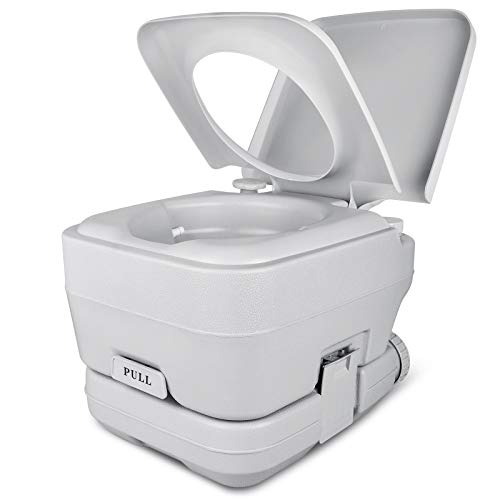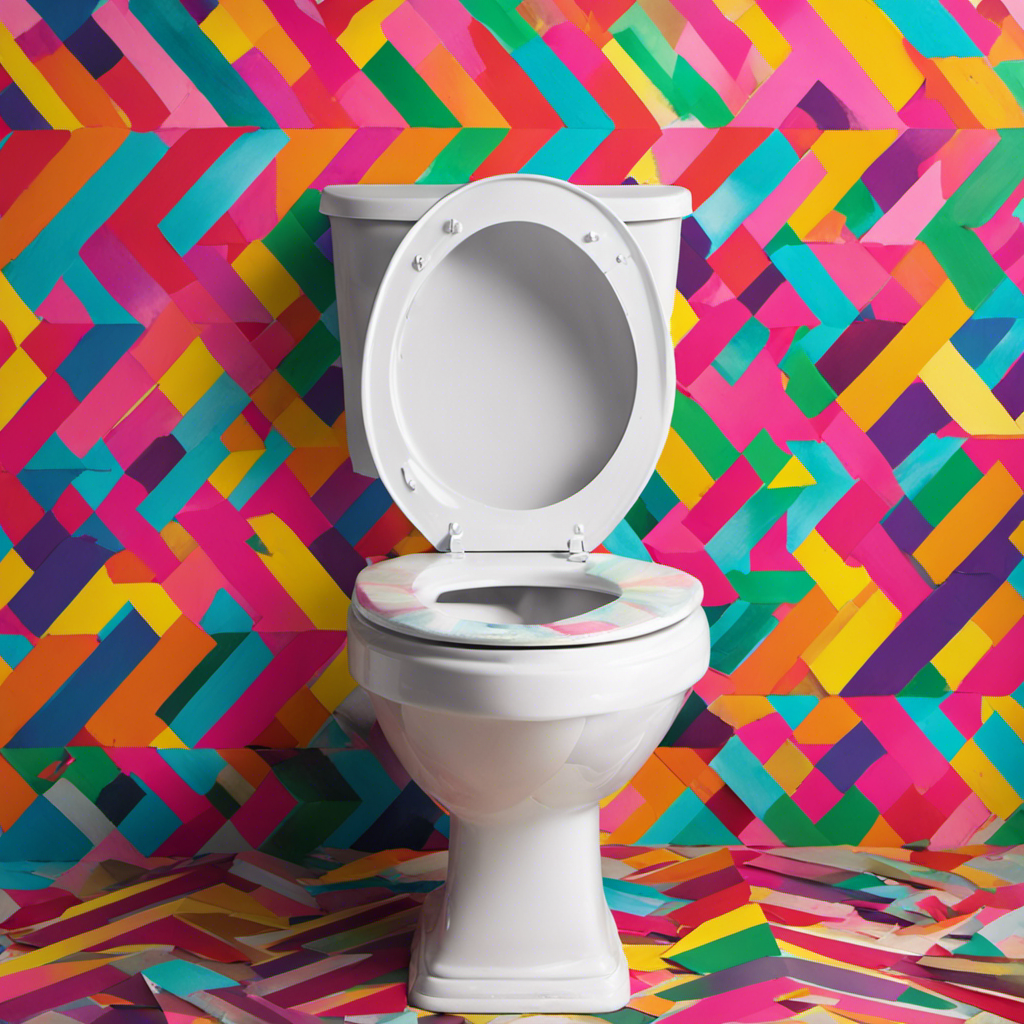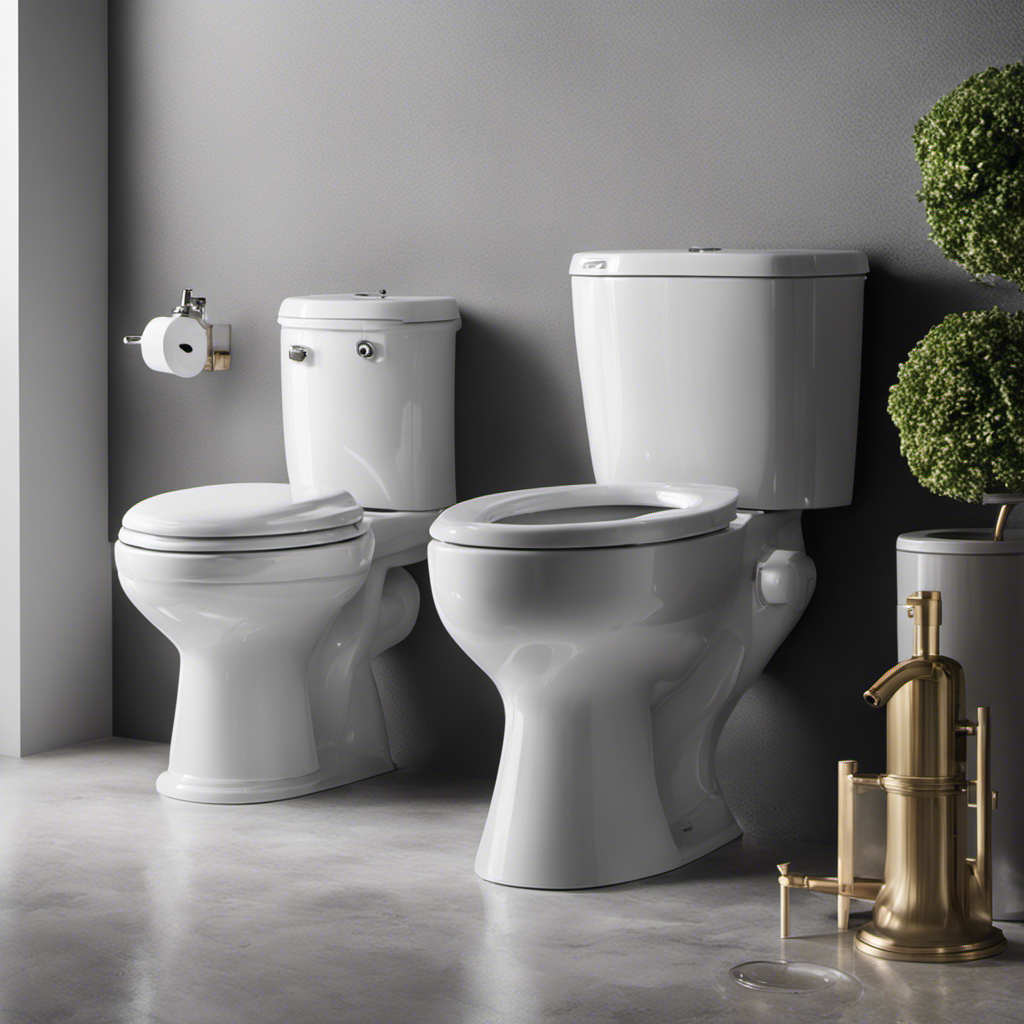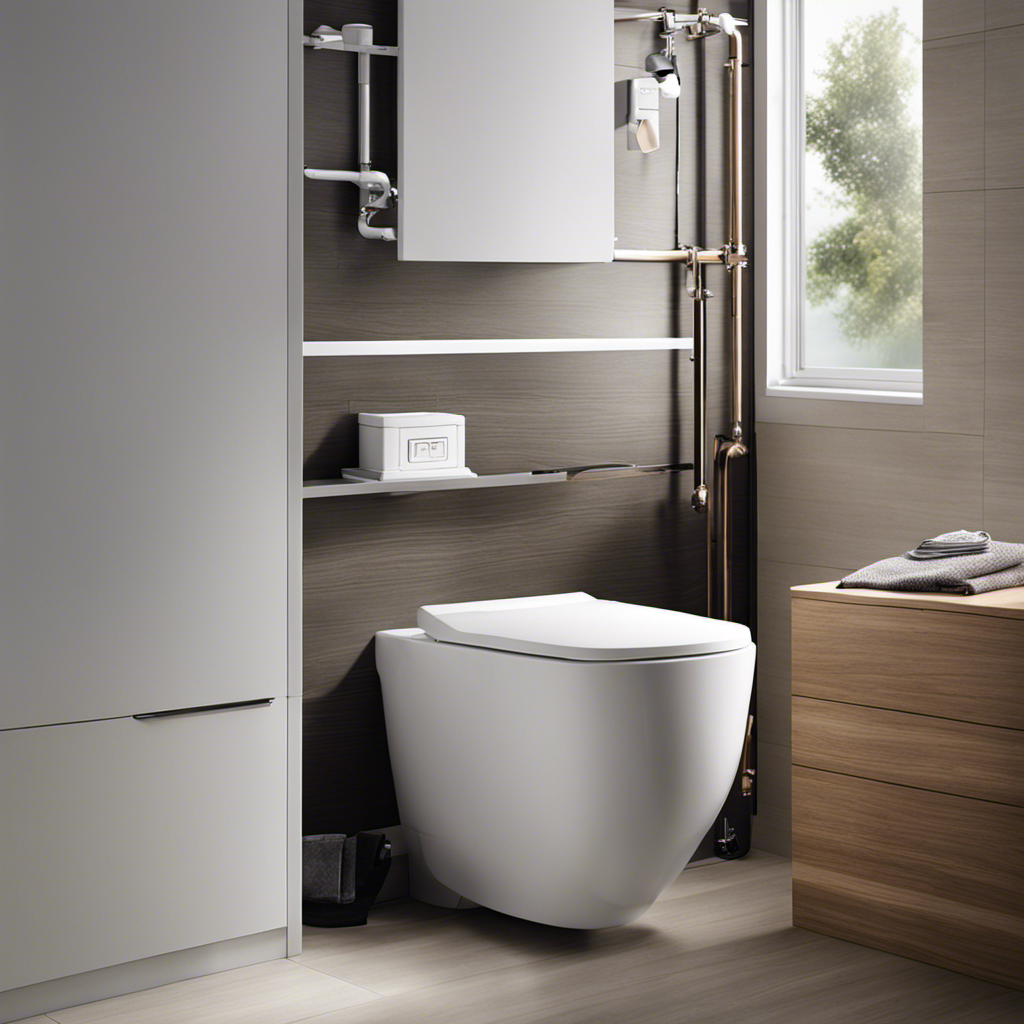Hey there!
Ever experienced the frustration of a toilet that flushes twice? Trust me, I’ve been there. But don’t worry, I’ve got you covered.
In this article, we’ll dive into the nitty-gritty of troubleshooting double flushes in toilets. We’ll focus on two common culprits: problems with the flapper and issues with the water level in the tank.
So, if you’re ready to save water, money, and your sanity, let’s get down to business and fix those annoying double flushes.
Key Takeaways
- The most common causes of a double flush are problems with the flapper or the water level in the tank.
- Failing flappers can be adjusted or replaced to ensure optimal performance and prevent water leakage.
- An overfilled tank can cause a second flush, so it’s important to adjust or replace the fill valve to control the refill.
- If the issue persists, it may be necessary to call a plumber for further assistance.
Common Causes of Toilet Double Flushes
The likely causes of a double flush are a problem with the flapper or the water level in the tank, so I need to start by assessing the situation with the flapper. Troubleshooting toilet flush mechanisms is crucial to preventing water leakage in toilets.
One common cause of a double flush is a failing flapper. The flapper controls the release of water from the tank to the bowl. To fix this, I can remove the flapper and adjust the chain to ensure optimal performance. If the flapper is non-adjustable, I should replace it with a new one.
Another cause is having too much water in the tank. This can be due to issues with the fill valve and float cup. By adjusting or replacing the fill valve, I can control the refill in the tank. Checking for damage to the ball and screws or adjusting the clip or replacing the float cup can also resolve the issue.
It’s important to follow these steps to prevent water leakage and save water and money.
Fixing Failing Flappers
First, I need to assess the situation with the flapper. Troubleshooting flapper problems is crucial in preventing water leakage and ensuring optimal toilet performance.
The flapper is responsible for controlling the release of water from the tank to the bowl. If the flapper is adjustable, I will remove it and adjust the chain to ensure proper functioning. However, if the flapper is non-adjustable, it is recommended to replace it with a new one. Consider using a heavier flapper to prevent water leakage and enhance durability.
If the problem persists, I will check the water level in the tank. An overfilled tank can cause a second flush, so adjusting or replacing the fill valve is necessary.
It is essential to follow these steps diligently to fix failing flappers and prevent further water wastage and unnecessary expenses.
Adjusting the Flapper Chain for Optimal Performance
To ensure optimal performance, I will adjust the chain connected to the flapper.
Flapper maintenance is crucial in troubleshooting fill valves and fixing double flush issues. The flapper controls the release of water from the tank to the bowl, and any problems with it can cause water leakage or incomplete flushes.
Start by removing the flapper and adjusting the chain length. This will help in achieving the correct seal and preventing water from leaking into the bowl. If the flapper is non-adjustable or damaged, it’s recommended to replace it with a new one. Additionally, consider using a heavier flapper to ensure a better seal.
If the double flush problem persists, it is essential to inspect and troubleshoot the fill valves to control the water level in the tank.
Replacing Non-Adjustable Flappers
I will start by removing and replacing the non-adjustable flapper with a new one. When troubleshooting flapper leaks, it’s important to consider flapper replacement tips to ensure optimal performance.
Here are some tips to help you with the process:
- Start by turning off the water supply to the toilet.
- Lift the toilet tank lid and locate the flapper.
- Disconnect the chain from the flapper and remove the old flapper from the overflow tube.
- Take the new flapper and slide it onto the overflow tube, making sure it fits securely.
- Reattach the chain to the flapper, ensuring it has enough slack to allow for proper movement.
- Turn on the water supply and test the flush to check for any leaks.
- If there are no leaks, congratulations! You have successfully replaced the non-adjustable flapper.
Remember to always follow the manufacturer’s instructions and consult a professional if you encounter any difficulties.
Troubleshooting flapper leaks can be a simple task with the right tools and knowledge.
Resolving Water Overfill Issues
The overfilled tank can lead to a second flush, so adjusting or replacing the fill valve may be necessary.
When troubleshooting water overfill issues in a toilet tank, it’s important to consider the type of float mechanism being used.
For ball and arm floats, start by checking the ball and screws for any damage. Adjust the clip on the arm or replace the float cup if you have a cylinder float.
It’s also a good idea to look for a fill line on the tank to ensure the correct water level.
If the problem persists, it may be necessary to call a professional plumber for assistance.
Adjusting or Replacing Fill Valves and Float Cups
When adjusting or replacing fill valves and float cups, it’s important to ensure they are functioning properly to prevent overfill issues. Here are some steps to troubleshoot ball and arm floats:
- Start by checking for water leakage around the fill valve and float cup.
- Inspect the ball and arm float for any signs of damage or misalignment.
- Adjust the ball and arm float by bending the arm to the correct position.
- If the ball and arm float cannot be adjusted, consider replacing it with a new one.
By following these steps, you can effectively troubleshoot ball and arm floats and prevent overfill issues in your toilet tank.
Remember to always check for water leakage and make necessary adjustments or replacements when needed.
Frequently Asked Questions
How Does the Syphon Mechanism Work in a Gravity-Fed Toilet?
The syphon mechanism in a gravity-fed toilet is crucial for the flushing process. It creates a vacuum, allowing water to flow from the tank to the bowl. Regular maintenance is important to ensure optimal performance and prevent double flushes.
What Are Some Signs That Indicate a Problem With the Flapper?
Common flapper problems include water leakage and improper water release. To replace a flapper, turn off the water supply, disconnect the chain, and remove the old flapper. Install the new flapper, adjust the chain length, and test for proper functioning.
Can a Double Flush Occur if There Is Too Little Water in the Tank?
Yes, a double flush can occur if there is too little water in the tank. Insufficient water can lead to incomplete flushing, causing waste to remain in the bowl and requiring a second flush.
Is It Possible to Fix a Failing Flapper Without Replacing It?
Yes, it is possible to fix a failing flapper without replacing it. Some alternatives include adjusting the chain, using a heavier flapper, or ensuring optimal performance.
Are There Any Other Potential Causes of a Double Flush That Were Not Mentioned in the Article?
Other potential causes of a double flush could include a faulty fill valve, a damaged ball or screws in a ball-and-arm float system, or an improperly adjusted clip or float cup in a cylinder float system. Troubleshooting techniques for a double flush involve assessing and fixing these issues.
Conclusion
In conclusion, troubleshooting double flushes in toilets is essential to conserve water and prevent unnecessary expenses. By addressing issues with the flapper and water level, you can effectively resolve this problem.
Remember to adjust or replace the flapper if it is failing, and ensure the flapper chain is properly adjusted.
Additionally, if the water level is too high, adjust or replace the fill valve and float cup.
Did you know that a leaking toilet can waste up to 200 gallons of water per day? Taking prompt action to fix double flushes can help save both water and money.











